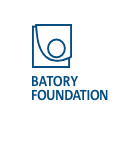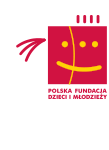Operating Algorithms in Domestic Violence Cases
Counteracting exclusion
Completed
mazowieckie
Warszawa
2014-04-01 - 2015-06-30
247 933,28 PLN
223 033,28 PLN
violence
Project description
Surveys led in Poland show that in every fifth family violent acts take place, and over 60% of respondents approve of beating children "for pedagogic purposes". In cases of suspected home violence, educational and healthcare workers, among others, are required to initiate intervention procedure. So far, they discovered only very rarely the cases of home violence, arguing that there were no objective premises to take decisions on initiating formal procedure and/or taking other action.
The project aimed at making the system of assistance for violence victims more efficient through developing and implementing among healthcare and education employees a tool for diagnosing cases of family violence and intervention action algorithms.
Tools were developed that should make it easier for healthcare and education workers to take decisions on how to deal with family violence victims, and thus should contribute to more effective assistance and greater safety for the persons.
4 focus surveys were conducted (2 groups in Warsaw, 2 groups in Kielce, in all 48 participants), based on which the needs of education and healthcare workers related to making the system of counteracting violence more efficient were diagnosed. Diagnostic questionnaires and action algorithms were developed: two for education workers (for children aged below 9 and for older children) and 2 for healthcare workers (patients aged below 18 and adults), and 2 information booklets. Workshop seminar was organised for pilot project participants and experts in the field of counteracting family violence. National pilot test of developed solutions was conducted that helped to improve them (290 evaluating questionnaires). 2900 information booklets (1450 for education workers and 1450 for healthcare workers), and 6000 risk evaluation questionnaires for incidence of family violence together with algorithm for action were printed (1500 of each type). The results of the project were presented during a conference with participation of representatives of education institutions, healthcare institutions and media (over 120 participants).
Beneficiaries of the project are persons experiencing violence who will have better chances for receiving assistance as a result of more effective reaction from medical and educational services.
We use the grant for capacity building
The project aimed at making the system of assistance for violence victims more efficient through developing and implementing among healthcare and education employees a tool for diagnosing cases of family violence and intervention action algorithms.
Tools were developed that should make it easier for healthcare and education workers to take decisions on how to deal with family violence victims, and thus should contribute to more effective assistance and greater safety for the persons.
4 focus surveys were conducted (2 groups in Warsaw, 2 groups in Kielce, in all 48 participants), based on which the needs of education and healthcare workers related to making the system of counteracting violence more efficient were diagnosed. Diagnostic questionnaires and action algorithms were developed: two for education workers (for children aged below 9 and for older children) and 2 for healthcare workers (patients aged below 18 and adults), and 2 information booklets. Workshop seminar was organised for pilot project participants and experts in the field of counteracting family violence. National pilot test of developed solutions was conducted that helped to improve them (290 evaluating questionnaires). 2900 information booklets (1450 for education workers and 1450 for healthcare workers), and 6000 risk evaluation questionnaires for incidence of family violence together with algorithm for action were printed (1500 of each type). The results of the project were presented during a conference with participation of representatives of education institutions, healthcare institutions and media (over 120 participants).
Beneficiaries of the project are persons experiencing violence who will have better chances for receiving assistance as a result of more effective reaction from medical and educational services.




